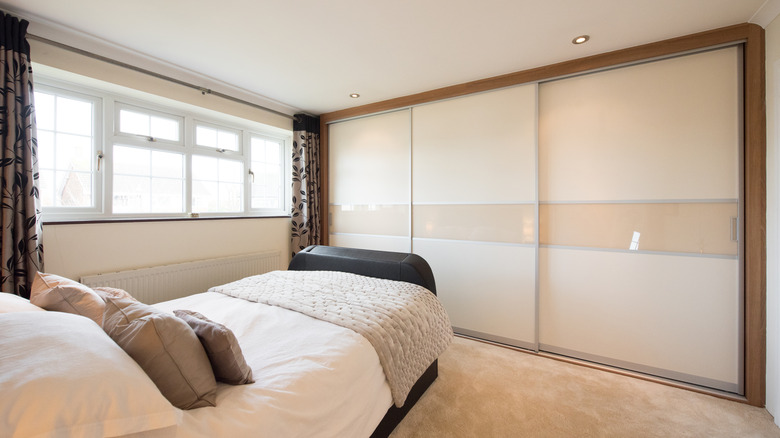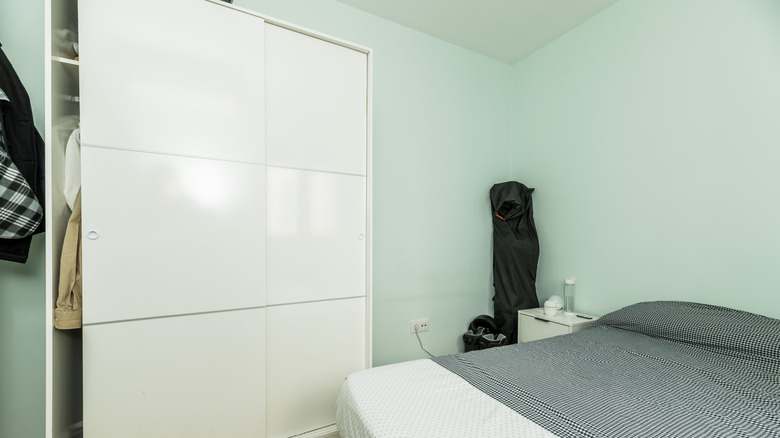What Are Bypass Doors And How To Know If They Will Work In Your Space?
Even if you have never heard the term "bypass door" before, you probably know what one is — you might have even grown up with a set in your house. Bypass doors include two or more panels that move independently and can slide past each other. Picture a typical glass bypass shower door with two panels that slide past each other on a dual track, allowing you to get in on either side, and you've got the idea.
This type of system is commonly used in smaller spaces where swinging doors would take up too much floor space; you often see these doors on bedroom closets for this reason. They can present an alternative when other space-saving options may not work, such as when bi-fold doors might block access to something else in the area or when you don't have the wall space for a barn door. They also work well on linen closets, which are often located in hallways (if you haven't already ditched the door on your linen closet).
Depending on the size and style you need, bypass doors can be quite affordable. Less expensive systems can cost around $200; however, if you need to cover a lot of space, have the desire for high style, must have top-quality materials, or all of the above, a top-shelf bypass door system can run $1,000 or more. When deciding if bypass doors are right for your home, one of the main considerations is the size of your opening, which matters for a few different reasons.
Are bypass doors the right fit?
Bypass doors may be a space-saving door solution, but space still matters. You will want the width of your doors to be slightly bigger than your opening, which may not immediately make sense. However, when the doors are closed they should overlap slightly so you cannot see between them. This will make for a cleaner finish and ensure you don't see the clothes or pantry staples hiding inside. The nice thing about bypass doors is that you combine as many as you need to adequately cover the space — but they may not be practical if the opening is too narrow or cost-effective if it's too wide.
You also need to have enough height to accommodate the track hardware the doors will slide on. If your floors are not level, you'll have to leave enough of a gap at the bottom to allow the doors to slide smoothly no matter where they are along the track. Make careful measurements when considering a bypass door system, and if your tape measure is telling you that this solution might not work in your space, don't worry. Explore the best types of doors to choose in a home with a smaller floor plan to find an option that works for you.

